Plunge in for Special Olympics
February 24, 2011
Love the idea of splashing in frigid water for charity but hate traveling to an icy destination to do it? You’re in luck. Chill out at the Polar Plunge, jumping off this Saturday, Feb. 26, from two SoCal locations: Zuma Beach and Lake Castaic.
The Plunge benefits Special Olympics Southern California, whose programs help local children and adults with intellectual disabilities improve their self esteem and physical fitness. Sponsors include the L.A. County Sheriff’s Department, the Department of Beaches and Harbors, and county Lifeguards. Sheriff’s deputies and lifeguards will be on hand to participate and keep plungers safe.
You can register individually or as part of a team, and family and friends are welcome to cheer the plungers on. A minimum donation of $50 per individual is required to participate, which entitles you to a T-shirt, a chance at prizes, plenty of hot coffee and the knowledge that you have contributed to a good cause. If you want to show support without taking the plunge, simply donate to one of the teams.
Registration for the Zuma Beach Plunge begins at 8:30 a.m., and the plunge itself is at 10 a.m. A light breakfast will be served before the event, which will be hosted by Miss Malibu 2011. Lifeguards will perform a mock helicopter rescue, and KTLA anchor Glen Walter will announce the start of the plunge. UCLA’s Anderson School of Business and USC’s Marshall School of Business are bringing large groups. You can park for free on the west side of Pacific Coast Highway, or for $4.75 in the Zuma Beach lot.
Registration for the Castaic Lake Plunge begins at 8 a.m., and the plunge is at 10 a.m. (Be forewarned: Snow is forecast for the day of the event!) The Castaic Lions Club will provide a pancake breakfast from 9 a.m. to 10:30 a.m. Parking is free on Castaic Lake Road at the West Ramp entrance.
Veteran plungers recommend wearing something to protect your feet from the cold sand, and bringing towels and warm clothing for the chilly aftermath. You can plunge as deep and long as you want (within lifeguard safety guidelines), but keep your head above water so you can be spotted. Wacky costumes are welcome, and an award will be given at each location for the best one.
And if you decide to brave the February waters this weekend, why not share your photos on our website? Those who took part can savor the memory, and those who didn’t can shiver in solidarity.
Posted 2/24/11
The sandman cometh to Venice
October 12, 2010
On paper, it sounds almost boring: Move some sand across a beach. But when you’re talking about Venice Beach—L.A.’s seaside cradle of Beats and bodybuilders, celebrities and chainsaw jugglers—not even the sand wants to be ordinary.
So next month, engineers will be dodging just about everything from roosting birds to running grunions to random pipes and renegade sunbathers when the county’s long-awaited shore refurbishment gets underway.
The $1.66 million project, approved by the Board of Supervisors on Tuesday, will restore a section of beach around the landmark lifeguard headquarters that has been significantly eroded in recent years.
Since the construction of Venice’s breakwater in the early 1900s, the coast has been susceptible to erosion because the sand can’t be replenished by natural wave action. Over the decades, sections of beach have been periodically nourished, although fresh sand has not been added since the 1970s.
But the winter storms of 2004 and 2005 left the beach particularly damaged, and the wind and waves chewed it up again last winter. As a result, the renowned attraction was reduced to a dispiriting shadow of its famous old self, and local beachgoers couldn’t help but mourn the estimated 30,000 cubic feet of sand that disappeared.
The refurbishment will restore a segment of beach about the size of two city blocks where the public parking lot, recreational facilities and lifeguard headquarters are located.
“At first glance, it’s a very simple project,” said Department of Public Works Project Manager Sam Shadab. “But the devil is in the details.”
Dry sand will be hauled a half-mile or so into the eroded area from a 2,500-foot-long stretch of better-stocked beaches north of the breakwater. A convoy of massive earth-moving equipment will scoop two or three feet of surplus sand from the “borrow” area’s surface, then transport it in 10- or 20-cubic-yard loads to the eroded area.
 Each borrow site, Shadab said, will be barricaded with safety fencing to protect the public from construction activity. Public access to the water will be limited during construction to small openings in the barricades every 150 feet or so.
Each borrow site, Shadab said, will be barricaded with safety fencing to protect the public from construction activity. Public access to the water will be limited during construction to small openings in the barricades every 150 feet or so.
Each load, Shadab said, will be spread over the new site to smooth the beach and cover the exposed stone facing in front of the lifeguard building. The project should take only six to eight weeks, he added – a good thing “because we have a very small window of time.”
Why the limitations? Shadab and Public Works Section Head Kamel Youssef chuckle as they tick off the complications engineers will face.
“Well, we cannot operate the equipment on nights or weekends,” explained Youssef, who is overseeing the project. “And we cannot have construction from May to September, because that is beach season.”
“Then,” Shadab added, “we have the roosting season of the Snowy Plover. And we have to avoid the running of those little fish that look like snakes – the grunion. And we have to be cognizant of the California Brown Pelican and the California Least Tern, and make sure they have not returned late in the season.”
And then there’s the human wildlife, Youssef added.
“Some of this equipment weighs 20 tons with a 20 cubic yard capacity and a cockpit 10 or 12 feet off the ground,” he noted. “The wheels are as big as a man. The operators cannot see everything like you can see in your vehicle. So we have to have an extensive and detailed security system, and pilot cars in front of the convoy so that people don’t get run over. Some people, as you know, sleep in the sand.”
Then there’s the 66-inch drainage pipe that movers will have to avoid crushing, a challenge engineers plan to meet with a temporary “bridge” of reinforced concrete. And yet, Youssef and Shadab said, the strategy is still cheaper and less complicated than hauling in inland sand that might have damaged roads in other municipalities, widened the project’s carbon footprint and threatened the beach’s ecosystem.
The project, Youssef said, should be completed in January – one last obstacle permitting.
“If we have a lot of storms and rain,” he noted, “the equipment might sink into the sand.”
Posted 10/12/10
Fighting erosion at Venice Beach
October 7, 2010
 A massive sand-moving mission is about to get underway at Venice Beach.
A massive sand-moving mission is about to get underway at Venice Beach.
The Board of Supervisors on Tuesday will consider a $1.66 million Venice Beach Refurbishment Project that would bring in earth-moving equipment to relocate 30,000 cubic feet of sand from north of the Venice breakwater to the area in front of the lifeguard headquarters. That area, half a mile south of the breakwater, suffered heavy erosion in the winter storms of 2004-5 and again last winter. The six-to-eight week project will spread a fresh layer of sand more evenly and widen the surface of the beach to increase the recreational area and better protect nearby coastal businesses and residences from flooding and storm damage.
Because the project will affect public access to the beach, it is being scheduled for the winter months when crowds are smallest.
Posted 10/7/10
The big chill
August 11, 2010
It’s been a long cold summer.
Whether the record-setting chill of July and early August makes this L.A.’s best or worst summer depends a lot on where you live—and a little on what you value most in the season. While waiters in Venice have had to hand out blankets to rooftop lounge patrons, kids in Sylmar have been able to frolic in an unusually temperate county park.
Hotter weather is expected this weekend—finally—and there are a lot of potentially scorching days yet to be logged before the sun sets on the summer of 2010. But what’s happened so far is unusual enough that the National Weather Service was moved to put out a statement Wednesday headlined, “What has happened to summer in Southern California?”
(The answer, in short, is that an upper level offshore trough—the kind that usually shows up in the fall or winter—has decided to park itself off the West Coast for the last 2 1/2 months.)
The ensuing, and seemingly endless, June gloom has led to some stunning temperature readings.
The average temperature of 65.7 degrees at LAX tied the record for the coldest July on the books since statistics started being kept in 1944, the weather service said. (July of 2010 shares the distinction with 1948 and 1965.) The high of 65 degrees logged at the airport on July 8, the weather service noted, “would be below normal even for January!”
With the weather service using exclamation points to underscore the drama of the situation, it’s no surprise that the coastline chill has led to some national media attention.
At Venice’s Hotel Erwin, waiters have had to hand out blankets and crank up heaters at the High Rooftop Lounge.
Even with such amenities, business is off as fewer patrons brave the uncharacteristically cool elements to enjoy 360-degree views from the hotel, which overlooks Muscle Beach.
“I’ve worked at outdoor restaurants for 6 years and I’ve never seen anything like this,” said Tiffany McClintock, a food and beverage manager at the High, as she calls it. “The weather has had a huge impact…We expect June gloom, but it’s August and usually we have summer by now.”
Although summer has been pretty much a bust for bronzing (which isn’t good for you anyway), it’s been a boon on the green side of things because power usage has dropped along with temperatures. The Los Angeles Department of Water and Power says that, since July 1, customers have been using 5.2% less than the department had forecast.
That’s a lot fewer air conditioners being cranked up.
“In cooler weather, there’s reduced demand for power, and that’s what we’re seeing,” said Michael Cockayne, supervisor of load forecasting at DWP.
A really hot summer day will demand 5,500-5,700 megawatts, he says. On Wednesday afternoon, the peak load was at about 3,830 megawatts.
“That’s very low,” he said,
Cockayne warns that no one should get too complacent, however. Peak power use days typically begin in earnest about the middle of August. “It’s a pretty good chance that we’ll see more peak days between August 15 and September 15,” he said.
So far this summer, though, the cooler weather has meant a break for lifeguards at county beaches, who’ve performed 3,050 rescues since June 1—compared to 6,745 in the same period last year.
Overall beach attendance is down, too, to just over 13 million visits in July. That’s well below the 18.9 million visits last July, but above the month’s average of 12.4 since 2000.
The cool summer has also offered a break to the elderly.
One measure of that is the fact that cooling centers have had to be activated only once this summer, notes Ellie Wolfe, manager of internal services for the county’s Community and Senior Services Department.
“I’m loving it,” Wolfe said. “It’s been a much safer and saner summer—so far.”
Kids attending summer camp at the county’s El Cariso Park in Sylmar have been enjoying cooler-than-usual days for field trips and park activities. “It’s been a whole lot nicer than last summer,” said Sandra Chapman, the park’s recreation supervisor.
At the El Cariso pool, the usually sweltering deck has stayed cooler this summer, to the delight of sunbathers. “People seem to love it because the weather is, like, perfect,” said pool manager Mike Baham. As for the lifeguards, “none of ‘em got burned this year.”
National Weather Service meteorologist Jamie Meier, stationed in Oxnard, hears it from both sides of the hot and cold debate.
“I get mixed reviews,” she said. Her family, living on the Westside, tells her: “Our air conditioning bill has been fantastic.” But a friend visiting from Texas was not so enthusiastic, summing up her feelings with a simple: “California is cold!”
Posted 8/11/10
L.A. lifeguards runaway winners—again
August 10, 2010
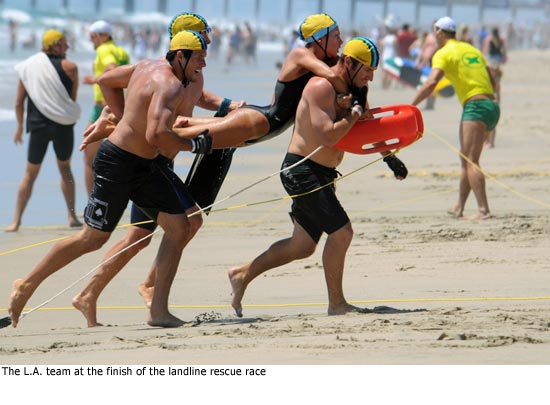 Los Angeles County lifeguards boast an athletic dynasty that even the New York Yankees can’t touch.
Los Angeles County lifeguards boast an athletic dynasty that even the New York Yankees can’t touch.
The county team swamped the competition at the three-day National Lifeguard Championships last weekend in a swirl of swimming, paddling, running and water rescue work—for the 24th straight year.
L.A. hasn’t lost the team title since 1986. Since the U.S. Lifesaving Association launched the event in 1970, they’ve captured that title an amazing 37 out of 40 times.
“People were in awe of what we were able to do,” says Capt. Jay Butki, one of the team’s managers. “We’re ecstatic.”
The final team score at this year’s competition at Huntington Beach wasn’t close. The L.A. team scored 812.5 points. The second place squad, from Delaware, finished with 223.75.
“Most likely, we’ll never lose this title,” says Brian Murphy, who won the men’s open championship and is stationed in Santa Monica.
The L.A. County team was so dominant that it also claimed six of the top 10 spots in both the men’s and women’s individual competitions.
The No. 1 woman was Alison Riddle, 24, who won 5 of the 8 competitions she entered, including the iron woman, a combination of running, board paddling and swimming.
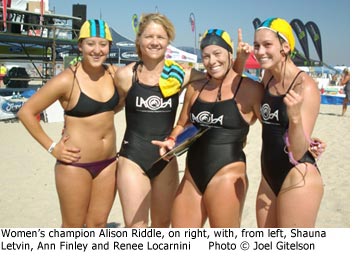 “It was awesome,” says Riddle, who savored her ironwoman victory the most. “It’s such a long event and that makes it really tough.”
“It was awesome,” says Riddle, who savored her ironwoman victory the most. “It’s such a long event and that makes it really tough.”
Making life tougher were water temperatures that didn’t feel like summer. “The water was so cold it gave you an ice cream headache,” she says.
Riddle joined the Lifeguards in 2008, shortly after graduating from USC, where she played varsity water polo. Her weekend victories netted her medals and a pair of sunglasses for each victory. But, in her business, not even champions catch a break: Riddle reported for her regular shift on Monday at 7 a.m. at Redondo Beach’s Avenue C tower.
Riddle, who finished ninth as a rookie in last year’s championship, says she owes much of her success to a trip last winter to train in Australia, where she worked hard on paddle boarding. “To be able to learn from the best in the world was amazing,” she says.
Murphy, the men’s champion, won three events—paddleboard, surf ski and the so-called Taplin relay, a team medley race that involves swimming, paddling and rowing. The 27 year old grew up in the South Bay, with three older brothers who also became lifeguards. He signed up at 18. (He still competes in team events with his brother Mike.)
Murphy remembers being in awe as a little boy at lifeguard competitions. “I grew up watching all these guys race, and now I’m lucky enough to do it myself,” he says.
Riddle and Murphy can’t rest on their victories. Next month, they’ll be jetting to Japan, part of a 12-person national team that will include four other L.A. lifeguards.
The secret to L.A.’s dominance partly involves size. It’s the nation’s largest lifeguard service and hosts the biggest team, with 57 competing this year among the 450 from around the country.
Peak physical conditioning is another L.A. tradition.
“That’s one of the things we pride ourselves on,” says Capt. Chris Linkletter, a team manager and competitor who practices what she preaches. She won a 2K run in the 40 to 44 age bracket and finished second or third in six other events, including two different ironwoman competitions.
The team’s strong representation in the older age categories is a key to the team’s dominance, team members say. They routinely do extraordinarily well in all of the over 30 age brackets, a fact no one knows better than this year’s most senior competitor, John Matesich, 72.
Matesich, a county lifeguard for 49 years, won all of his three events in the over-70 bracket, including the board race and men’s ironman.
“He’s been a legend forever,” says Butki.
So, it seems, has the L.A. team.
Posted 8/10/10
A bold new look for summer
May 20, 2010
The Santa Monica beach skies were grey but L.A.’s iconic lifeguard towers were anything but.
And the cadre of casual beachgoers who happened upon the just-unveiled towers—newly painted in wild, psychedelic hues—got an eyeful Wednesday morning.
If their early reviews are any indication, the towers’ summer makeover has the makings of an international crowd-pleaser.
“It’s beautiful!” said Yves Bollotte, a visitor from Paris, directing his Gallic enthusiasm at one of the three towers on view near the Santa Monica Pier.
“It’s groovy,” said Joyce Attal, CEO of a New York City marketing firm, who’d just finished jogging. “It’s bringing the hippie days back to the beach.”
“I think the towers are spiffy, if that’s still a word,” said Mary Loucks, a teacher from Kern County who was keeping a close eye on her soaked but happy field trip class of second-graders.
“I like the color and pizzazz,” added homeless advocate Ron Hooks, of not-so-far-off Marina del Rey, as he stood astride a blue bike on the boardwalk chatting with a homeless man with a football who called himself R.U. Faster.
By summer’s end, hundreds of thousands of beachgoers are expected to see the towers, part of a giant “Summer of Color” public-art project that by early June will bestow a temporary new look on all 156 L.A. County lifeguard towers, from Palos Verdes to Malibu.
When the project is complete, towers along a 31-mile stretch will sprout colorful flowers, figures and abstracts. Even the ramps and pilings are getting the Day-Glo treatment for the project, which will be on display until October.
The $1.5 million privately-funded effort is the brainchild of Bernie and Ed Massey, founders of the L.A.-based non-profit arts and education group called Portraits of Hope. Their organization brings together thousands of hospital patients, school children and disabled people to collaborate on brightly painted public art. Earlier targets for the colorful treatment: a Beverly Hills oil well, New York taxicabs and even a blimp.
At Wednesday’s unveiling, in which grey plastic sheeting was stripped off the three towers for a slo-mo “reveal,” lifeguard officials said they were initially skeptical of the color explosion about to overpower their towers’ traditional Holland blue.
“We are a conservative bunch, and we weren’t totally sold on this project at first,” Mike Frazer, chief of the county’s lifeguards, admitted to the crowd.
Frank Bird, a director with the lifeguards’ union, said skeptics became converts by helping out with the painting sessions at the project’s Marina del Rey headquarters with students from the Braille Institute and from a Compton middle school at which many students had never seen the ocean before the trip. “Our guys are really on board now,” Bird said.
At the ceremony on the sands, Supervisor Zev Yaroslavsky thanked his wife, Barbara, for persuading him to get the project rolling with the county because of her admiration for the Masseys’ work. Her lobbying paid off; Yaroslavsky’s office helped smooth the way with county agencies with jurisdiction at the beach, including the Beaches and Harbors Department and the Lifeguard Service.
The giant projects are a form of art therapy. Kids learn that their efforts can make a difference when they see their finished artwork displayed in very public places. About 8,000 volunteer artists, mostly children, took part in painting over 2,000 pre-cut plastic-coated panels in recent months that are now being bolted to the sides and roof of the lifeguard towers. (See our earlier story here.)
“These projects are all about kid power,” Bernie Massey said at the ceremony.
The art therapy concept appealed to French tourist Bollotte.
“It is therapy for us, too,” he noted.
Lindsay Hannah, a visiting artist from British Columbia who was swinging on the tall swing set at the beach playground near the tower, felt the same way. “I absolutely agree that art is therapeutic,” says Hannah. “It’s fantastic.”
Posted 5-19-2010
Beach forecast: Sunny, splash of color
February 15, 2010
Break out the Ray-Bans. Los Angeles County’s lifeguard towers are about to undergo a Technicolor summer explosion.
From May to September, county lifeguard towers from Palos Verdes to Venice to Malibu will bloom with bright images of golden fish, blue flowers and psychedelic patterns of green, yellow, purple and pink.
The public art display, “Summer of Color – Lifeguard Towers of Los Angeles,” is the brainchild of Bernie and Ed Massey, who run the non-profit arts and education group Portraits of Hope.
The artists applying the colorful acrylics: thousands of L.A. area children and adults from schools, shelters, hospitals, after-school programs and Scout groups. On a recent morning, young students from Palisades Elementary School pitched in, painting bright colors on some of the 1,800 pre-cut plastic panels that will be fastened to the towers this spring.
About 150 of the iconic towers will get the makeover. The project may be the most eye-catching display to hit the sand since “Baywatch.” But it’s not just a decorative addition to the beaches, which are visited by 45 million people annually. As part of the program, which is funded with private donations, students will also get an education in civic issues and problem-solving. There’s a broader social objective, too.
“We want people to recognize the power of collaboration,” says Bernie Massey. “Seeing all of the towers transformed will become a great unifying symbol for people all over Los Angeles County.”
Launched in 1995, Portraits of Hope started by wrapping the oil well on Olympic Boulevard near Beverly Hills High School with bright panels. Since then, they’ve brightened up New York City taxicabs with their trademark vibrantly colored graphics, as well as New Orleans schools, NASCAR racers, and even a blimp.
The Masseys are partnering on the project with L.A. County’s Beaches & Harbors Department, which donated temporary studio space in Marina del Rey, and the Lifeguard Division of the county Fire Department. The lifeguards had only one major demand.
No red paint.
That’s the color of the lifeguards’ signature jackets and swimsuits—and for safety’s sake, not a great color for a beachfront art installation.
If you’d like to help apply the rainbow of other colors the project will be using, drop Portraits of Hope an e-mail.
Posted 2-16-10
Rescue on the rocks of Catalina
November 18, 2009
 As they walked up the hill overlooking the ocean, the Topanga couple only wanted to test the ham radios they’d been trained to use in a disaster.
As they walked up the hill overlooking the ocean, the Topanga couple only wanted to test the ham radios they’d been trained to use in a disaster.
Instead, Karl Tso and Deborah Ava ran into a real-life emergency on Catalina. Their quick work one night late last month helped save the life of a man who was half-conscious and bleeding at the rocky bottom of a 35-foot cliff.
By spotting the man and rushing to alert authorities, Tso and Ava set in motion a rescue operation that included the county’s Baywatch paramedics and an airlift to a mainland hospital in a county Fire Department helicopter. At a board meeting early next month, Supervisor Zev Yaroslavsky will be presenting Tso and Ava with a commendation. “Karl Tso and Deborah Ava exemplify how dedicated volunteers can empower themselves to help others in times of emergency, and even save lives,” the supervisor said in his citation.
Tso and Ava had traveled to the Camp Emerald Bay Boy Scout camp for an overnight trip with their two Cub Scout sons on October 23. At 9:30 p.m., as their boys played with counselors and fellow scouts, the couple took a walk up a hillside above Doctor’s Cove. It was high enough, Tso figured, to test out the two-way radios on which they’d been trained to coordinate community disaster efforts with the volunteer Topanga Coalition for Emergency Preparedness. The ham, or amateur, radio operators can continue to keep neighbors informed and connected even when cell and other phone services go down. “In a disaster, that’s critical,” notes Tso, who obtained his ham license last spring.
Part way up the hill, Ava says she heard an “eerie moaning sound” below. Tso shined a powerful police flashlight along the water’s edge, where he saw the injured man sprawled across the jagged boulders.
He’d evidently slipped from the same trail they were on. “The way he was laying there, I thought he’d broken his spine,” Tso says. Tso and Ava yelled to him. “We couldn’t tell whether he could hear us at all,” Tso recalls.
The couple ran back down the trail and alerted counselors to phone 911. Then they returned to the vantage point above the man, later identified as Peter Conn, 59, who’d also come to Emerald Bay with his son for the Cub Scout weekend.
Counselors and parents came to assist, but for a time it was unclear to Tso whether the 911 call was successful. So, using his ham radio, Tso sent out an emergency message for anyone on the mainland, more than 20 miles away. He reached L.A. Sheriff’s Sergeant Scott Bastian, a ham radio enthusiast who was driving home to Fullerton after finishing his shift at the Men’s Central Jail in downtown L.A. Bastian quickly phoned the Sheriff’s Radio Center and confirmed for Tso that “Baywatch as well as Sheriff’s Rescue was on the way.”
When the Baywatch boat arrived, paramedic Joel Gitelson swam ashore and, with the help of camp counselors who’d made their way to the injured man, immobilized Conn on a “back board” to prevent further injury. Gitelson then rowed Conn from the beach to the waiting rescue boat, Isthmus, in a borrowed skiff.
On the cliff above, Tso was happy to hear Conn complain to paramedics that his leg hurt “because that meant he hadn’t severed his spine,” Tso recalled. The Isthmus took Conn to a shore-side heliport where a chopper crew airlifted him to St. Mary’s Hospital in Long Beach.Conn sustained a broken jaw and had swallowed teeth jarred loose in the fall. He also suffered multiple fractures of a hand, leg and hip. Last week, Conn was moved to a hospital closer to home, where he’s “making progress,” says Gail Conn, his wife and business partner in an interactive market-research firm.
The family is grateful for Tso’s and Ava’s quick thinking. “We owe them everything,” says Gail Conn, who says her husband could well have bled to death had he not been rescued quickly. “He was very lucky to be found when he was.”
For their part, Tso, who designs and builds homes, and Ava, a packaging designer at Mattel, found the experience a little “surreal.” But as Ava says, “It was thrilling that we were able to help the man.” In fact, they’d attended a disaster radio training session just two days before the outing. “It’s so ironic that we’d just been to the class,” Ava laughed. “And, then, boom, it all just worked.”
Sex bias finally arrested in the Sheriff’s Department?
October 30, 2009
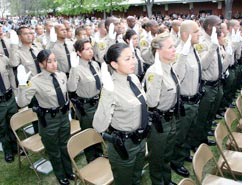 None of the young women who graduated this fall from the sheriff’s academy have met the grandmother who fought their battles, who paved the way for them to comprise 40 percent of their class for the first time in department history.
None of the young women who graduated this fall from the sheriff’s academy have met the grandmother who fought their battles, who paved the way for them to comprise 40 percent of their class for the first time in department history.
If they’ve heard of Susan Bouman at all, it’s only as the name on an aging court case.
Back in 1980, Deputy Bouman filed a federal class-action lawsuit alleging gender discrimination after she was denied a promotion to sergeant. She won the case in 1988 and received $31,500 in back pay, plus benefits.
More important, the case led to a federally-mandated agreement—a consent decree—compelling the department to hire and promote more women and establish a state of the art anti-harassment policy. That victory was much longer in the making.
This fall, nearly two decades after Bouman’s retirement, a federal district court judge quietly lifted a major portion of the consent decree, verifying that the department has successfully put policies in place to effectively guard against sexual harassment. The so-called “equity” portion of the consent decree was the second major victory, following the creation of a gender-neutral sergeant’s exam that won court approval in 2007.
The anti-harassment victory was bittersweet for the 61-year-old former sheriff’s deputy, now known as Susan Paolino. She recalls the years of appeals and foot-dragging that preceded the strides of more recent times. “I think that they’ve made a lot of progress,” says Paolino, who retired as a sergeant in 1990 with a stress disability she attributes to years of fighting the department. “But I’m sorry it’s taken so long.”
Undersheriff Larry Waldie, who oversees compliance with the so-called Bouman decree, points proudly to the department’s harassment policy “as a model for other departments.” But he acknowledges that, for years, the department “chose to take everything to court” rather than resolve the harassment and promotion problems.
“Quite frankly,” he says, “our old way was not the right way.”
A consent decree is a voluntary but binding pact supervised by a judge, with the defendant and plaintiff agreeing to a series of remedies to correct the contested behavior. In some cases—such as the federal consent decree recently lifted at the LAPD–courts appoint third-party monitors. In this case, the judge ordered the two sides to work matters out between themselves, with the judge as the final arbiter. In all consent decrees, judges can impose sanctions, including fines.
“Everybody asks what’s taken so long,” says Paolino’s attorney, Dennis Harley. The answer, he says, is simple: In the early years of the case, sheriffs Peter Pitchess and Sherman Block “didn’t want anyone telling them what to do.”
Today, women make up nearly 17 percent of the sheriff’s sworn personnel, slightly less than the percentage of women in the LAPD. Paolino credits Sheriff Lee Baca, who assumed office in 1998, for more rapidly upending the old-boy culture.
“When he came in,” Paolino says, “the department began an effort to comply with the consent decree. Before that, they fought it tooth and nail.”
Observers and attorneys familiar with the case agree. “It was a priority for Sheriff Baca to resolve the issues under the consent decree to move the department forward,” says Abby Liebman, founder of the California Women’s Law Center and a former member of the Equity Oversight Panel, created by County Supervisors in 2002 to monitor harassment incidents and recommend discipline within the department.
In the mid-1970s, Paolino, then known as Bouman, was a young deputy who couldn’t win promotion to sergeant, despite scoring well on the exam. Harassment and discrimination were pervasive, she says, a part of the culture. Male colleagues left pornographic pictures lying around and flooded her mailbox with transfer request forms so she’d get the hint and leave.
After her internal appeals failed, she filed her lawsuit. By the time she won, she’d been promoted to sergeant, but male colleagues still behaved badly. “There was more harassment after I was sergeant than before,” she says.
The department, meanwhile, fought the judgment at the Ninth Circuit and the U.S. Supreme Court without success, before entering into the consent decree in 1993.
By then, Paolino had retired and started law school. She practiced gender-discrimination law in Whittier and, among her cases, successfully sued Los Angeles County on behalf of female lifeguards who’d been harassed by their male colleagues. Retiring from the law earlier this decade, she moved to San Diego County to help raise a grandchild.
Paolino says she doesn’t hear from women at the Sheriff’s Department but regards herself as a pioneer, saying her suit has “made a big difference” in the department’s gender policies and practices.
Still, two hurdles remain before the consent decree can be vacated entirely.
One concerns ending gender bias in the hiring of entry-level deputies. To increase numbers, the department is aiming at a goal of averaging 20.11 percent women for each graduating class. The department has reached that number in every class since July 2008, with two most recent graduations this fall hitting the 40 percent mark. The department also is revising the physical fitness and firearms tests to level the playing field for women.
“They seem to be working hard to get females through the academy now,” Paolino says.
The other remaining hurdle involves the hiring of women into 51 “coveted positions,” key deputy positions that can serve as stepping stones for eventual promotion to sergeant. To be certain that the job requirements don’t favor men, the department has hired outside experts to “validate” new tests for each position. Only one of the jobs has been validated so far, with a second following in a few weeks. Attorneys on both sides expect the pace to accelerate markedly next year.
In the meantime, the department’s interim goal is to have the percentage of women in those coveted positions be proportional to their overall representation in the department—currently, a lag of about two percentage points that sheriff’s officials hope to fix next year, says Capt. Larry Brogan of the Sheriff’s Labor Relations and Compliance section.
If the department remains on track, the decree could be lifted by mid 2012. For her part, Paolino is optimistic but retains the wary perspective of a battle-scarred veteran.
“I’ve got a 30 year history with this,” she says. “I was seen inside the department as a three-headed monster.”




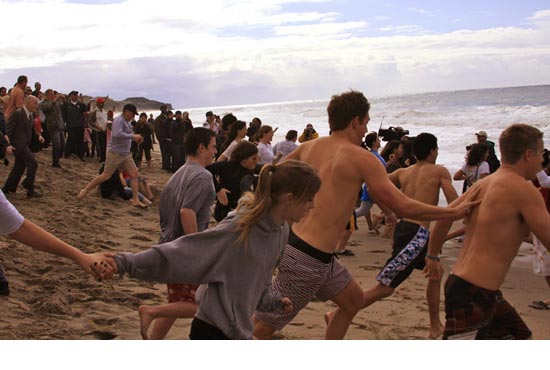
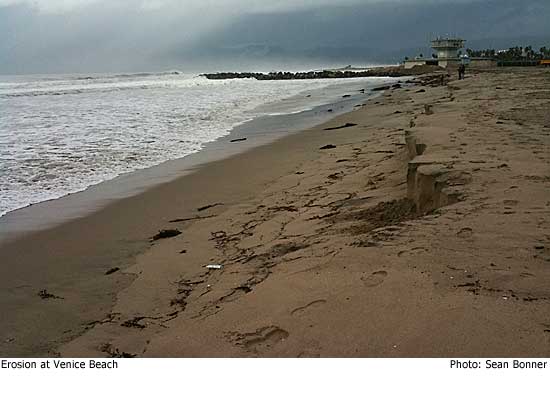
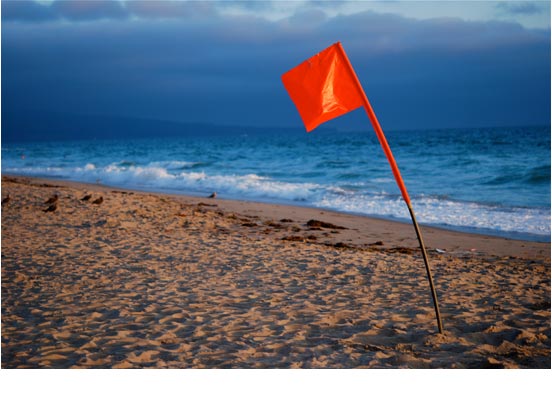
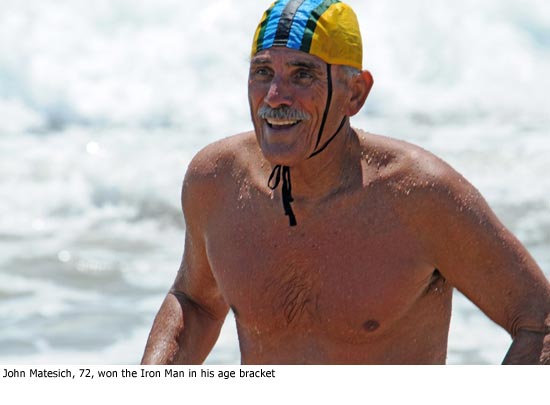

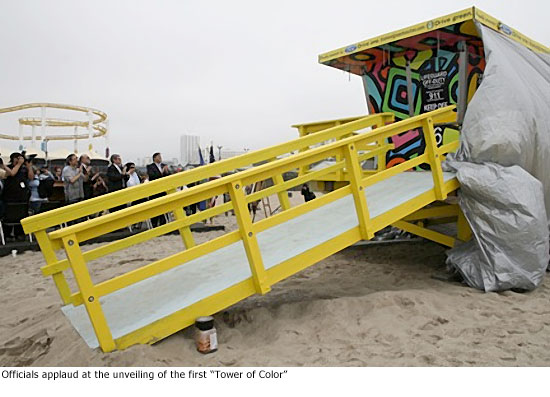
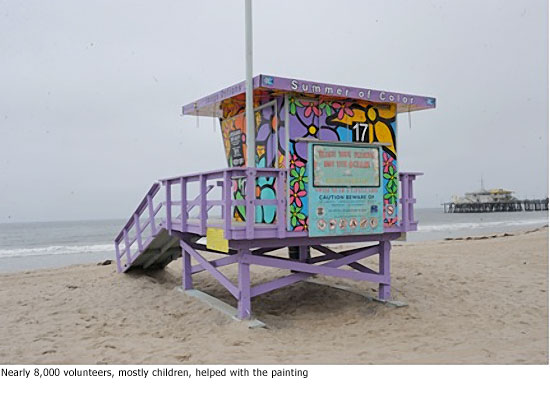
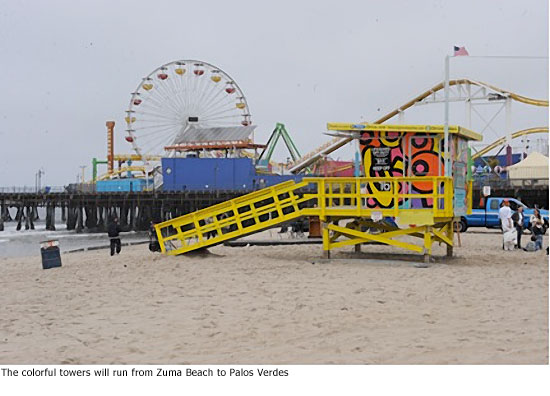
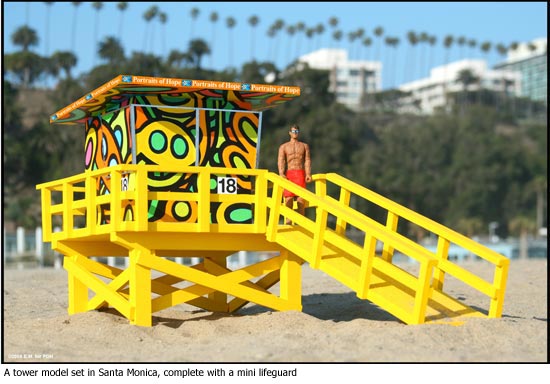










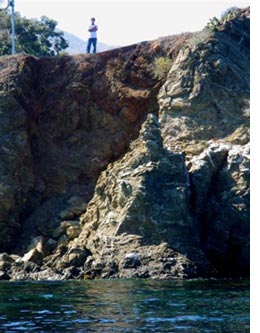







 405 bridge work causes a stink
405 bridge work causes a stink

